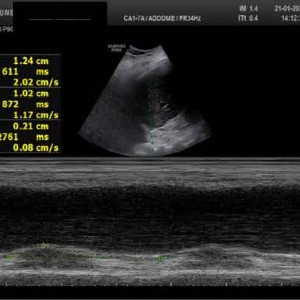Ultrasound assessment of diaphragmatic dysfunction and its improvement with levosimendan in patients with chronic obstructive pulmonary disease

Accepted: 27 February 2023
All claims expressed in this article are solely those of the authors and do not necessarily represent those of their affiliated organizations, or those of the publisher, the editors and the reviewers. Any product that may be evaluated in this article or claim that may be made by its manufacturer is not guaranteed or endorsed by the publisher.
Authors
Diaphragmatic Dysfunction (DD) is a clinical condition in which the diaphragm becomes weak or paralyzed, because of muscle strength reduction. It can be due to muscular issues or loss of proper innervation, but, also, to pulmonary hyperinflation or air trapping, such as in Chronic Obstructive Pulmonary Disease (COPD). DD impacts on COPD induced dyspnea, determining its progressive worsening, but levosimendan, an inodilator better known as Ca2+ sensitizer, may limit this phenomenon and diaphragmatic ultrasound assessment can be useful in monitoring its effect. Here, we show the case of a 77-year-old woman admitted to the Emergency department for acute exacerbation of chronic dyspnea in COPD, related to right ventricular failure and DD, which did not respond to medical therapy and non-invasive mechanical ventilation but did experience a favorable outcome after intravenous administration of levosimendan.
How to Cite

This work is licensed under a Creative Commons Attribution-NonCommercial 4.0 International License.
PAGEPress has chosen to apply the Creative Commons Attribution NonCommercial 4.0 International License (CC BY-NC 4.0) to all manuscripts to be published.

 https://doi.org/10.4081/ecj.2023.11248
https://doi.org/10.4081/ecj.2023.11248








